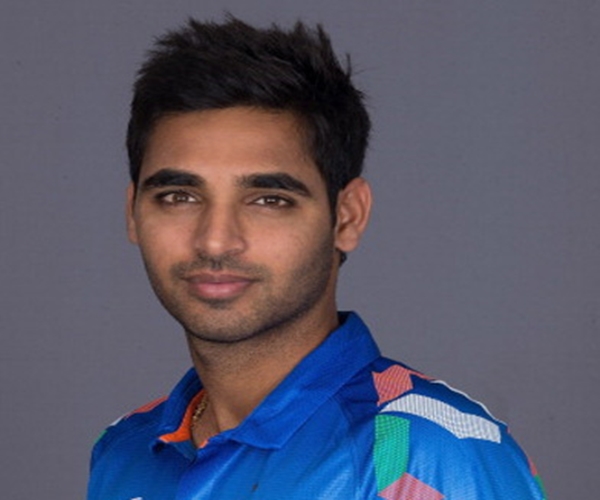
Bhuvneshwar Kumar, born February 5, 1990, has been the leader of India's pace assault since his debut in 2012. Outfitted with gigantic development both noticeable all around and off the pitch, Bhuvneshwar has the ability to trouble the best of batsmen.
Let’s take a look at 10 Interesting and unknown facts about 'India’s Master of Swing' Bhuvneshwar Kumar :
1. Getting God first ball
Bhuvneshwar Kumar declared himself as one for the future from the get-go in his First-Class profession. At 19 years old, he rejected Sachin Tendulkar for a duck — the first time through Tendulkar (who is alluded as the God by fans) was out without scoring in Ranji Trophy.
2. “Early” success
Bhuvneshwar was missing the goal immediately in both T20Is and ODIs. He dismissed Nasir Jamshed in his first over on T20I make a big appearance, and improved in ODIs, getting Mohammad Hafeez out off his first ball.
3. Economical best
While there is no questioning Bhuvneshwar's capacity as a wicket-taker, his magnificent economy rate is now and then passed up a great opportunity for. Notwithstanding when Bhuvneshwar isn't taking wickets, he holds the keeps running down. Three of India's five most prudent spells in T20Is have originated from Bhuvneshwar. He is additionally one of the few Indian bowlers whose economy rate is under seven in T20Is, and under five in ODIs.
4. Bowled over!
Bhuvneshwar appreciates a standout amongst the most one of a kind knocking down some pins records the amusement has seen. His first wicket in each format stopped by getting the batsman bowled. He expelled Nasir Jamshed (T20Is), Mohammad Hafeez (ODIs), and David Warner (Tests) in this form.
5. Match-winner with the bat
While Bhuvneshwar's bowling deeds are abundant, he likewise has extensive ability with the bat. He has a First-Class century, which came in the most astounding design; in the second semi-final between Central Zone and North Zone at Hyderabad. Central were 219 for six in answer to North's 451 when Bhuvneshwar came into bat. They were soon 293 for eight, and after that 342 for nine preceding Bhuvneshwar engineered a late battle back. He scored a 253-ball 128 to lead Central to 469, as the side took the significant first-innings lead.
6. Makings of an all-rounder
As noted above, Bhuvneshwar has some ability with the bat. He demonstrated his guarantee from the get-go in his Test profession too. With India 406 for eight in answer to Australia's 380, Bhuvneshwar — on Test make a big appearance — exited to join captain MS Dhoni. The couple put on a match-winning 140-run remain, as Dhoni went ahead to finish a gigantic twofold hundred. Bhuvneshwar scored a vital 38 off 97 balls all the while.
7. The “player”
While cricket remains his first love, Bhuvneshwar has said that his most loved side interest is playing games on his PS3 and his iPad.
8. Not the first of his kind
Bhuvneshwar is not the first Kumar who hails from Meerut, swings the ball both ways, has taken a fifer a Lord's, and is a helpful batsman down the request! Be that as it may, his similarity with Praveen Kumar — no connection — closes there. While Praveen has been known to have a blazing temper and a demeanor issue, Bhuvneshwar is calm, mild-mannered, and shy.
9. Gayle’s bane
As said before, Bhuvneshwar has a propensity of working over batsmen. One man who has dependably battled against him is West Indian juggernaut Chris Gayle. Bhuvneshwar has dismissed Gayle four times in seven international matches across formats.
10. Army Dreams
As a youngster, Bhuvneshwar dreamt for being in the armed force before his energy for cricket made him pick the amusement. He would have made an excellent officer; his discipline is there for all to see!


